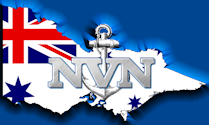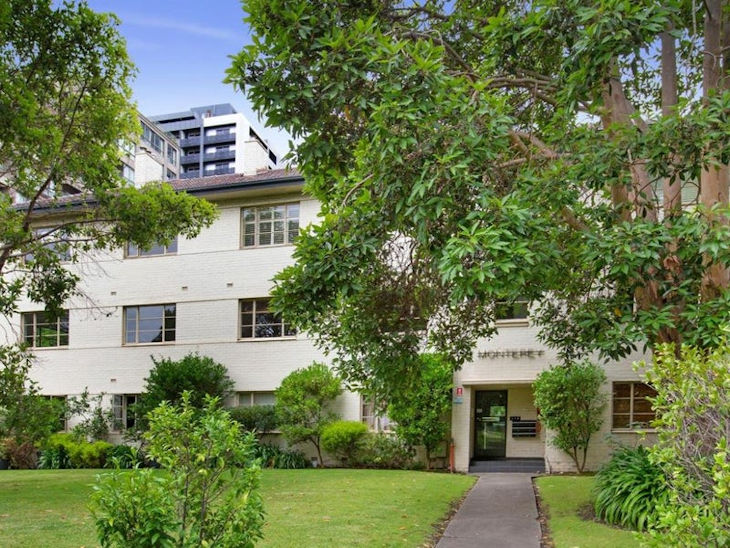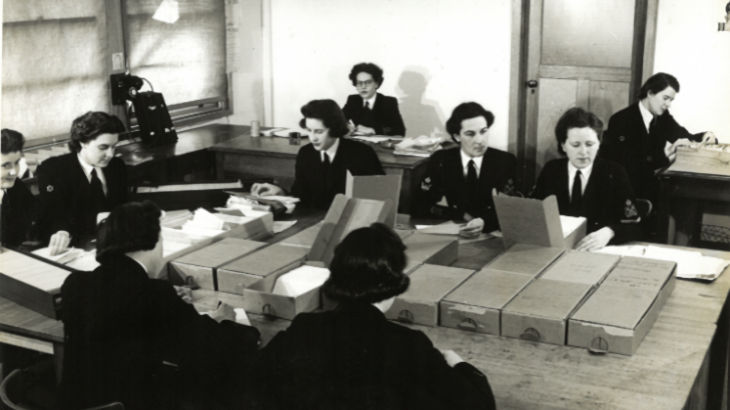
Navy Victoria
Network
Proudly supported by the Melbourne Naval Committee
CAPT Theodore Eric NAVE (Eric) OBE RAN (RN)
He was born on 18 March 1899 in Adelaide, eldest child of Thomas Henry Theodore Nave, clerk, and his wife Ethel Sophefia, née Petterson. After leaving Hindmarsh District High School, where he was a good scholar and fine cricketer, at sixteen Eric joined the South Australian Railways as a clerk. Royal Australian Navy Service Keen to serve in World War I, he obtained an appointment in the Royal Australian Navy (RAN) on 1 March 1917 as a Paymaster’s Clerk, with the rank of Midshipman, and served at sea in the Pacific. From 6 October 1918 to 4 July 1919 he was stationed aboard the training ship HMAS Tingira at Rose Bay, Sydney. Whilst serving on her, Nave began thoughts of studying Japanese. At the time, officers had to demonstrate competence in a foreign language in order for promotion to Sub-Lieutenant. Which language was Nave to choose? Looking through Kings’ Regulations [the regulations governing the Navy] I noticed that extra pay of 6 pence per day was paid to those qualified in French or German, but those proficient in Japanese received 5 shillings [ten times as much]. This discovery set me thinking. T.E. Nave And so doing, on 28 November 1918, Nave applied to his Commanding Officer to study Japanese. From 5 July 1919 to 30 September 1920 he was aboard the battlecruiser HMAS Australia, where he was promoted to Paymaster Sub-Lieutenant. He was based in Japan from February 1921 to April 1923, and was then examined by the officials of the British Embassy in Tokyo surprising the officers with his grasp of the language. He was awarded the highest pass mark (91%) ever recorded by them, also receiving promotion to Paymaster Lieutenant on 1 September 1921. He returned to service at sea aboard HMAS Brisbane from April 1923 to January 1924, and was then was attached to the staff of the Rear Admiral Commanding HM Australian Fleet. Royal Navy Service The British were concerned that Japan had designs on their Far East and Indian interests, but their intelligence-collection efforts were hampered by a lack of linguists and code-breakers. After Nave returned to Australia, the British Admiralty asked the RAN that he be lent to their China Fleet as an interpreter and (with the RAN’s knowledge) for secret code-breaking duties. While on the China Station (1925–27), he succeeded in breaking two Japanese naval codes. Impressed, the Admiralty then asked that Nave be lent to work in London; in January 1928 he joined the Government Code and Cipher School, Britain’s signals intelligence headquarters. His progress was spectacular. Made head of the Naval Section, he deciphered two more Japanese codes, one being the Naval Attaché code, enabling the British access to Tokyo’s exchanges with its Attachés in Europe. He was promoted to Paymaster Lieutenant Commander in 1929. Keen to retain Nave, the Admiralty offered him generous employment terms, which he accepted. His appointment with the RAN was terminated on 29 August 1930 and he transferred to the Royal Navy (RN) the next day. His career thenceforward comprised postings to the Far East and London; in 1937 Nave became head of the code-breaking section of the all-source Far East Combined Bureau in Hong Kong, a tri-service intelligence organisation based in Hong Kong. There his team successfully broke a series of Japanese naval codes until the introduction in early 1939 of "Naval Code D", designated by the US Navy "JN-25". Japanese incursions southwards in China created demands for more intelligence and threatened the bureau’s existence. By early December 1939, FECB had been relocated to Singapore, and the code was beginning to relinquish some of its secrets. Nave’s health deteriorated in the tropical climate and he was admitted to hospital late in 1938. In August 1939 the bureau was evacuated to Singapore where, on 2 September 1939, he married Helena Elizabeth Gray, a nurse who had cared for him in hospital. In London and Singapore the code-breakers struggled with the Japanese Navy’s new main fleet code. Although they broke some code groups by Christmas 1939, nearly forty thousand remained unsolved. At this juncture the pressure of work had begun to take its toll on Nave's health, and in early 1940 he was diagnosed as suffering from tropical sprue, and was sent back to Australia to recuperate. Sick, and with a "heavily pregnant" wife, he did not want to return to Singapore. The RAN applied his skills to enhance its own code-breaking capabilities, despite Admiralty demands for his return. In May 1941 he formed the joint army-navy Special Intelligence Bureau in Melbourne, where his team made considerable progress against Japanese codes. United States Navy code-breakers, whom the Japanese had forced from the Philippines, arrived in Australia where, together with Nave’s organisation, they formed the Fleet Radio Unit, Melbourne(FRUMEL) based in the Monterey Apartments in Queens Road.
FRUMEL was commanded by USN Lieutenant Rudolph Fabian, formerly of Station CAST in the Philippines. Despite continued success, (Nave had warned, a month before it happened, that the Australian base at Milne Bay, at the eastern tip of New Guinea, was to be invaded in late August 1942, so the base was reinforced, and the subsequent Battle of Milne Bay was decisively won by U.S. and Australian forces – the first time the Japanese had been defeated on land by the Allies) Nave was reportedly forced out of FRUMEL and "Monterey" by Fabian, who apparently regarded him as a "security risk", because Nave wanted to cooperate with the "inter-army" unit, the Central Bureau, based at Brisbane.
At the request of the Australian Military Forces, he was posted to General Douglas MacArthur’s Central Bureau in Brisbane in December. Placed in charge of the section dealing with Japanese naval material, he quickly made his mark, particularly in training field units to break codes in forward areas. In 1944 he was promoted to acting Captain. He helped ensure that Australia’s wartime code-breaking experience and expertise were preserved in a permanent Australian organisation, later known as the Defence Signals Bureau. Nave was placed on the RN Retired List on 18 March 1949, having ceased duty with the RAN the previous day. Post-War Career On 20 October he became a senior officer in the newly formed Australian Security Intelligence Organisation based in Melbourne. In October 1950 he was promoted to assistant director, ‘C’ branch, investigation and research, and in 1957 became regional director for Victoria. He developed procedures for security vetting, and was responsible for security during the 1954 Royal visit and the 1956 Melbourne Olympic Games. Nave retired in March 1959. He was a gregarious and charming man who had many friends. Active in the Naval Association of Australia, he became its first National President in 1960. In 1972 he was appointed OBE for services to ex-servicemen. Following the death of his wife in 1969, he married Margaret McLeish Richardson in December 1970. An enthusiastic gardener, he was president and life member of the Brighton Horticultural Society. In 1991 Nave was named as co-author of James Rushbridger’s controversial book, Betrayal at Pearl Harbor: How Churchill Lured Roosevelt into World War II. The book argued, without evidence, that Churchill withheld from Roosevelt decoded Japanese messages about its planned attack on Pearl Harbor, to ensure America’s entry into the war. Nave later repudiated the claim and denied any part in making it. Survived by his wife, two of the three daughters, and the son, of his first marriage, he died on 23 June 1993 at Mooloolaba, Queensland, aged 94, and was buried in Brighton cemetery, Victoria. Books
Sources:
|
 Eric Nave was an Australian
Eric Nave was an Australian 

